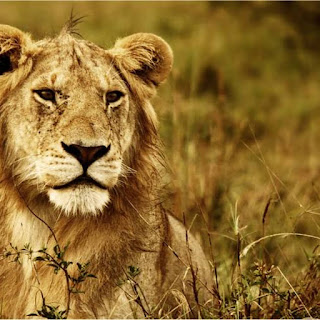Conserving Lions in a Modernizing Africa: A Delicate Balancing Act
"Conserving Lions in a Modernizing Africa: A Delicate Balancing Act"
In the heart of Africa, a continent rich in cultural heritage and natural wonders, a profound challenge unfolds—a challenge that encapsulates the delicate interplay between progress and preservation, between the aspirations of human societies and the imperatives of ecological integrity. At the center of this challenge stands the regal lion, an iconic predator whose survival is intricately intertwined with the modernization sweeping across African landscapes. This article embarks on a journey through the intricacies of conserving lions in a rapidly modernizing Africa, a journey that navigates the complex terrain where tradition, development, and conservation intersect.
A Heritage of Coexistence: Lions and Traditional Values
Lions are more than mere predators; they are cultural symbols that have long held significance in African societies.
1. Symbolism in Cultures: Lions have been revered in African cultures as symbols of strength, courage, and leadership. They are often woven into folklore, rituals, and art, embodying a deep connection between humans and the wild.
2. Rituals and Beliefs: Traditional practices that respect and protect lions have been passed down through generations. These practices contribute to a sense of stewardship and create a foundation for coexistence.
3. Harmony in Balance: For centuries, indigenous communities have coexisted with lions, fostering a balance between human needs and the preservation of wildlife. This harmony reflects the delicate equilibrium that modern conservation aims to uphold.
The Challenges of Modernization: A Changing Landscape
As Africa undergoes rapid modernization, the dynamics between humans and lions are shifting, presenting new challenges for conservation efforts.
1. Habitat Fragmentation: Urbanization, infrastructure development, and agricultural expansion lead to habitat fragmentation, isolating lion populations and impeding their natural movement.
2. Human-Wildlife Conflict: As human populations grow, conflicts between lions and communities escalate. Lions may target livestock, causing economic losses and triggering retaliatory killings.
3. Altered Prey Dynamics: Modernization can disrupt prey populations, affecting lion hunting patterns and leading to changes in their behavior and diet.
Modern Conservation Strategies: Navigating Complexity
Conserving lions in a modernizing Africa requires multifaceted strategies that honor both ecological imperatives and human well-being.
1. Community-Based Conservation: Engaging local communities in conservation efforts fosters a sense of ownership and shared responsibility. By aligning conservation with livelihoods and cultural values, initiatives can gain local support.
2. Livestock Protection: Implementing measures to protect livestock, such as building predator-proof enclosures and using guardian animals, helps mitigate human-wildlife conflict and reduce retaliatory killings.
3. Sustainable Tourism: Responsible wildlife tourism generates economic incentives for communities to support lion conservation. It raises awareness and provides resources for habitat protection.
4. Education and Awareness: Promoting awareness about the ecological importance of lions and the value of coexistence is essential for shaping public attitudes and garnering support for conservation initiatives.
A Holistic Vision: Balancing Progress and Preservation
Conserving lions in a modernizing Africa is not a dichotomy between development and preservation—it is a harmonious integration of the two.
1. Economic Incentives: Conservation efforts can contribute to local economies through sustainable tourism, providing an economic rationale for preserving wildlife and habitats.
2. Cultural Preservation: Recognizing and respecting cultural values associated with lions ensures that modernization is grounded in a holistic understanding of heritage and ecology.
3. Policy and Collaboration: Collaborative efforts between governments, NGOs, and local communities are essential. Implementing and enforcing policies that safeguard lions' habitats and well-being are critical steps.
4. The Promise of Coexistence: The delicate balancing act of conserving lions in a modernizing Africa holds the promise of a future where lions continue to roam the savannas, where human progress harmonizes with the rhythms of the wild.
Conclusion: Guardians of a Shared Legacy
In the unfolding narrative of modernization and conservation, lions emerge not only as majestic predators but as guardians of a shared legacy. They beckon us to tread a path that honors both the dynamism of human progress and the timeless wisdom of the natural world.
As Africa's landscapes transform, we are called to navigate the delicate balancing act—to harmonize tradition and innovation, to embrace prosperity while safeguarding ecological treasures. The journey to conserve lions in a modernizing Africa is a testament to our capacity to rise above challenges, forge alliances across cultures, and weave a narrative where the roar of the lion and the spirit of humanity coalesce in a symphony of harmonious coexistence.

.jpg)


Comments
Post a Comment